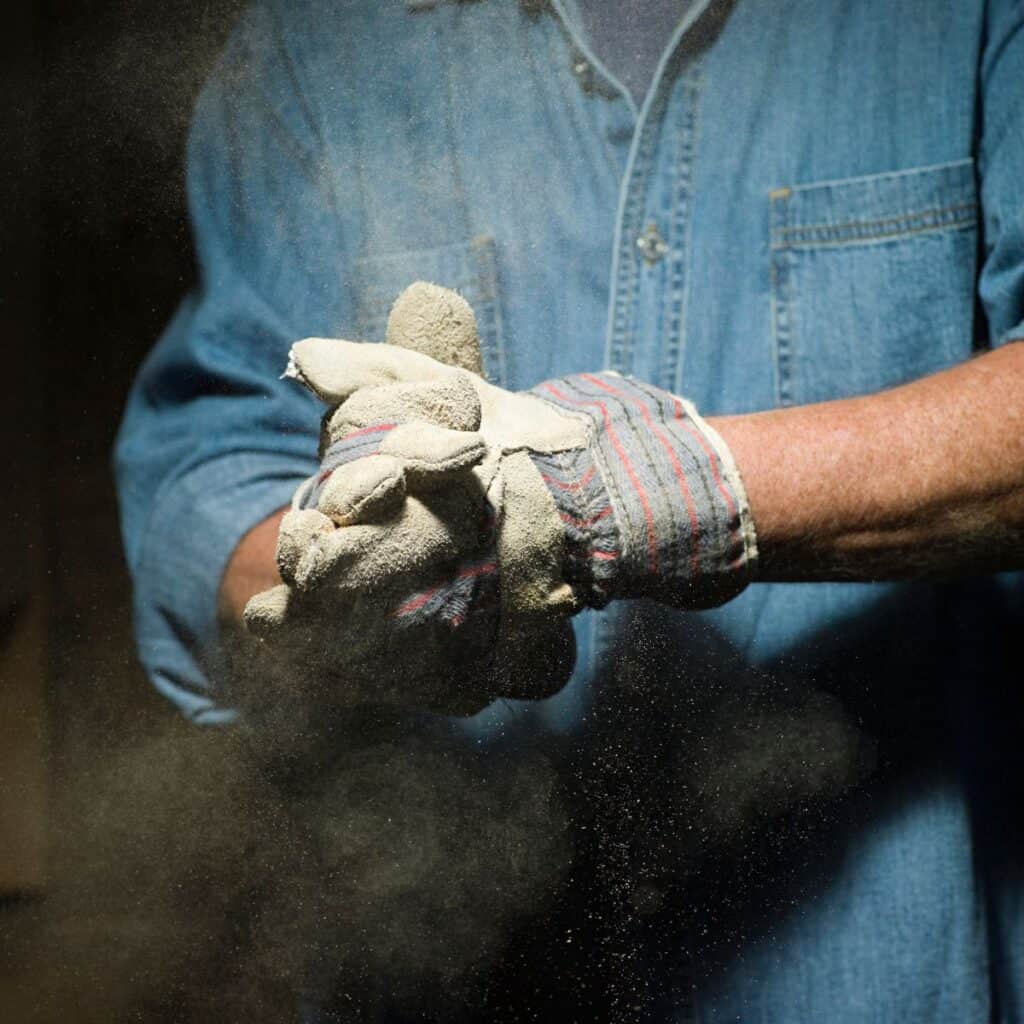02 Aug 2023

Dust can be a problem in almost any industry, but do you know the true dangers of dust and the devasting effects it can cause?
The HSE recently launched a ‘Dust kills’ campaign and HSE inspectors have been visiting construction sites nationwide with a specific focus on dust control. 500 construction workers are killed by dust this each year. They have now moved on to the manufacturing industry, where the use of materials containing silica, can cause serious health implications.
It is not just the obvious industries such as the construction industry, that can be affected by dust. It is hard to completely prevent dust as we create it in most everyday environments. However, controlling excessive amounts of dust is imperative to protect health and comply with the Control of Substances Hazardous to Health Regulations 2022 (COSHH).
There are two types of dust:
Nuisance dust
Nuisance dust is exactly what it says on the tin. It can be a nuisance in large quantities. It can make breathing difficult, can cause irritation to skin causing skin ulcers and dermatitis and eye irritation including visual disturbances. It can be the reason for a very uncomfortable working environment, so needs to be controlled.
Hazardous dust can be extremely dangerous and can cause fatal and debilitating illnesses, impacting quality of life. All the below health risks, have been linked to extended exposure to dust.
Common products such as grain, flour and wood can cause respiratory issues such as asthma, COPD and pneumonia.
Increased incidents of lung cancer, skin cancer and heart disease has been linked to long periods of certain dust exposure
This is a serious lung disease caused by the exposure to silica dust, please see further information from IOSH on silica dust below
What do health and safety professionals need to know about silica dust? – No Time To Lose.
Silica dust can be found in sand and stone, which is used to make pottery, glass, concrete, bricks and more. The control of Silica dust is extremely important, please see further advice from HSE here
Control of exposure to silica dust : A guide for employees (hse.gov.uk)
Dust can also cause…
Dust can build up if not cleaned regularly and can cause a hazard, particularly if any other chemicals are also on the ground. Dust in the air can also make visibility harder which will increase the likelihood of accidents.
Dust can also be a fire hazard, particularly dust from plastic, metal, wood and baking materials such as flour and grain.
Dust can affect sensors on machinery which prevents them from working correctly which increases downtime and reduces efficiency.
You have a legal duty to prevent or adequately control exposure to dust. You must ensure that your working environment is safe and meet standards for dust in the workplace. In the UK the HSE can insist on improvement plans and prosecute if they feel health is at risk.
The first thing an organisation must consider is a risk assessment. A risk assessment needs to be carried out by a competent person as this will identify the type of dust being created in your workplace, identify particularly hazardous areas of dust and assess the exposure that could cause the risk of health to employees. If you need help with a risk assessment, visit Health & Safety Consultants Bromsgrove, Worcestershire (sentinelsafety.co.uk)
Recommendations to eliminate dust would be made. If this is not possible then control measures would be put in place to maintain clean air, reduce dust and keep everyone safe.
Implementation of new operational changes could be made such as changing the raw material or reduction in operational procedures such as receiving pre-cut materials. It is important to control the dust at source before it becomes airborne. Fine dust particles can be suspended for many hours before they accumulate in an area that might not be the direct source. Extraction machinery, sealed enclosure units for working or introduce regular ‘damping down’ procedures can all help with this.
Dust monitoring surveys may also be introduced, which is extremely useful to see the comparison before and after implementations.
PPE may be sufficient with face mask and eyewear, but for high-risk environments RPE Respiratory protective equipment (RPE) (hse.gov.uk) may be necessary to remove contaminants from the air or provide a supply of quality air from an independent source.
Anyone in contact with dust should be given the correct training to ensure safe working practices are carried out. From having their PPE correctly fitted and ensuring it is mandatory, to training on the correct cleaning techniques that are required. Also ensuring equipment is regularly maintained and tested and regular health checks carried out and any changes are reported immediately to line managers.
Check you know the risks in your industry and have the correct preventative procedures in place to eliminate dust or if this is not possible reduce the risk of exposure wherever possible. Ensure that you are keeping everyone safe and complying with the law. If you need any hands-on practical help that can improve your safety levels in the workplace, please feel free to email info@sentinelsafety.co.uk or call us on 01527 833834, we’re happy to help.